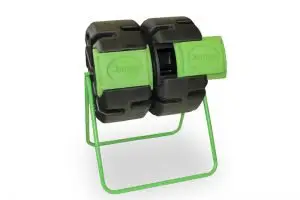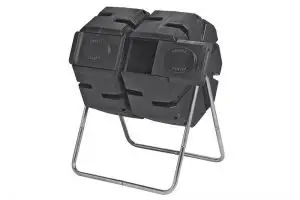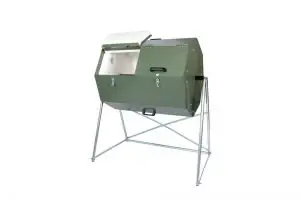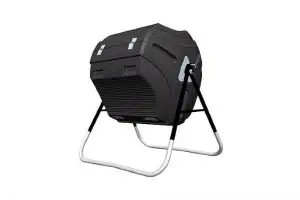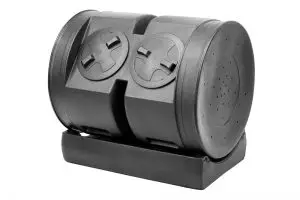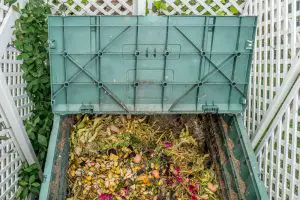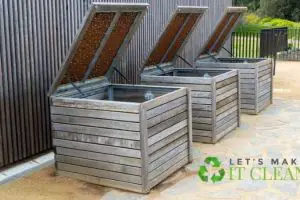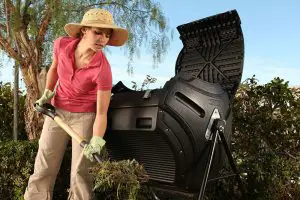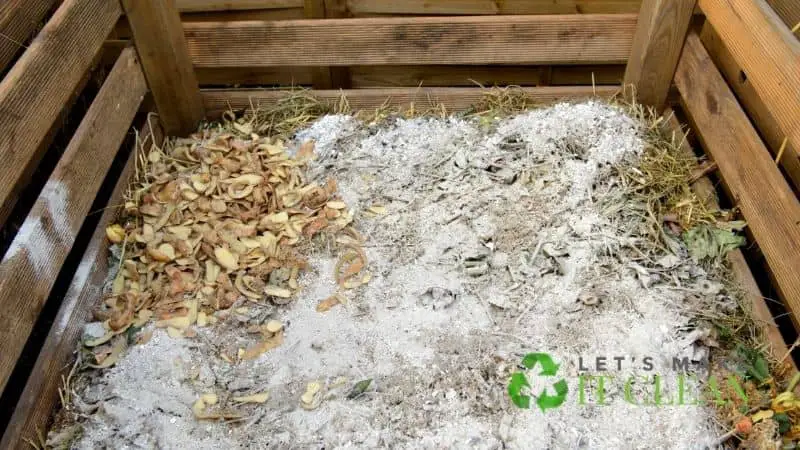Composting human excrement safely is possible. All you need is to follow straightforward guidelines, including composting waste from a toilet that diverts urine.
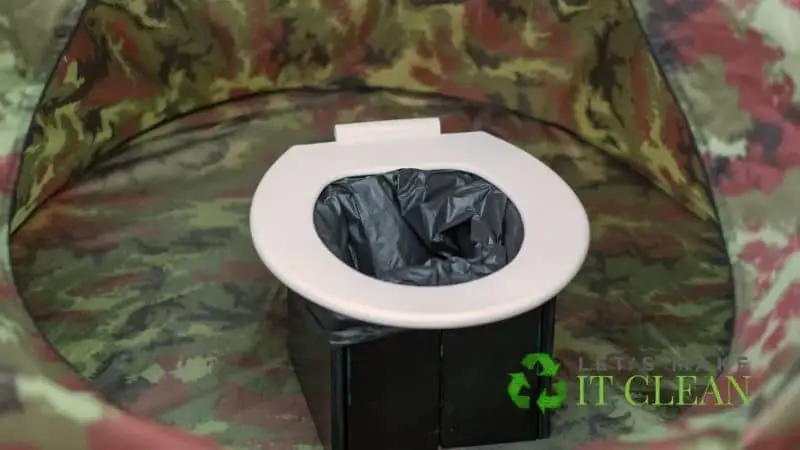
Dedicate a specific composter to composting human waste alone.
Quick Navigation
It will also help if you add dry leaves to your composter. The compost you make is best used in gardens where you grow plants that are not for human consumption.
Can you make and use compost from human waste without endangering lives? The answer is YES! You can make compost safely if you follow the guidelines in this article.
Gardeners are now conscious of the need to proper waste management as they use technology to create sustainable living.
For these reasons, people like Joseph Jenkins, and Geoff Hill have made efforts to come up with ways of composting all types of waste, including human waste.
Here is how you go about safe humanure composting.
How to Safely Compost Human Waste Using Compost Toilets
Whenever you have solid human waste that you want to compost, you need to be careful in how you go about it. First, you have to follow recommendations and composting guidelines from authorities such as World Health Organization.
Human waste from sewage systems created with urine-diverting techniques is easier to compost. The material that you will be removing from this type of sewage system, is slightly damp. People direct the urine and water liquid wastes to wastewater treatment plants. Technologies are employed to purify the liquid waste.
If you don’t have a urine-diverting compost toilet, you will have a rough time composting since the content is excessively wet from the urine.
When combined with human feces, the urine will create an anaerobic condition that favors bacteria inhibition. The bacteria will work on the heap with urine resulting in a horrible smell that disturbs people. It will also attract soldier flies.
Once you remove the human waste heap from the compost toilets, ensure you transfer it to a dedicated composter in specific sites.
An important rule vital in picking bins is that the bin must be leach-proof. If the night soil leaches out from the bottom of the sides of the container, it will contaminate drinking water resulting in poor sanitation.
Protect the bin to avoid the addition of water from the rain. Remember, excess water levels will result in producing a stinking smell. Provide proper ventilation for temperature control. Rotate the composters regularly to meet these conditions that organisms require for the process.
Add dry leaves, toilet paper holder, and grass clippings in the bin to balance brown material and green material. If you can avoid adding vegetable scraps, food scraps, and waste that is too wet, they will raise your tumbler’s moisture level.
Monitoring the process often is a good idea. Whenever you observe excess moisture, add dry grass clippings, dry leaves, and other rich materials in carbon. These materials will soak up the excess moisture in your device leaving your pile in optimum conditions.
For a pile that is too dry, add little amounts of water and nitrogen-rich materials.
How Long Does It Take for Human Waste to Compost?
Human waste takes about one year to compost if you don’t have a composter. If you put the materials in a composter, you will have a finished compost pile in three weeks to three months.
This, however, depends on the environment you create in the device for the decomposition process. With sufficient moisture level, optimum temperature, and adequate ventilation, the human feces will compost quickly.
On the other hand, poor conditions slow down the whole process. With too cold temperatures, bacteria will not work on the bin’s content fast enough.
How Do You Turn Human Waste Into Compost?
Whenever homeowners gather enough human waste and other organic material, the process is set to begin. For community composting, the toilet drums holding the contents will be emptied and transferred to a composting facility.
Highly trained personnel will then mix the toilet drum’s contents with sugarcane bagasse. The sugarcane bagasse is usually a byproduct of the process of making rum. The reason for creating this mixture is to hasten the decomposition process.
The microorganisms in the composter become excited due to the favorable environment you create for them. As a result, they reproduce rapidly, increasing the number of microbes working on the pile.
Microbial activity in the bin heats the pile to about 71 degrees Celsius, equivalent to 160 degrees Fahrenheit. These high temperatures kill the disease-causing bacteria and harmful pathogens in the heap.
The bacteria cannot survive extreme temperatures since they are used to the average human body temperature.
Make sure you continuously monitor the temperature in your composter. Whenever you realize that your pile is getting too wet, add dry leaves to soak up the excess water.
Once your compost pile is ready, you can apply it to the soil in your garden.
You do not need expensive chemical fertilizer to add nutrients to your soil. With human waste, you have a rich source of nutrients for your plants.
Can Worms Compost Human Feces?
Composting human waste has been there for years. It was done commercially for the first time in the ’80s. In most cases, people utilize an outhouse toilet and abandon them after they are full, which takes around ten years.
After abandoning them on the site without proper sanitation, even if you don’t do anything, the process will happen and nutrients distributed to the soil, and in the end, the whole waste ends up being soil.
It would be best if you had in mind when vermicomposting ensures human waste is in solid form. When the waste has more urine, the urine kills the worms responsible for the process, affecting the process.
There are different methods, and they all differ depending on who came up with the technique. But there are those standard practices, in this case, using the tried poo and placing it in a vermicomposter. After that, add worms to the bin.
Human waste composting doesn’t have much scientific study unless you plan to do it on a large scale where the process involves towns or big projects. Vermicomposting helps reduce 60% of the pathogens, which include E-coli and Salmonella.
This is evidence that since you don’t have any disease-causing pathogens, you will not transfer any pathogens from the compost pile to the soil thereby composting safely. To be sure, you can leave the human solid for about a year, if possible, somewhere outside and then use it later. That way, you will not have an issue since it will be safe to use.
Composting of human waste to make fertilizer takes place in different stages. Human waste contains many organisms that carry the waste as food. The microorganisms include bacteria and fungi. If the waste is rotten, it has more organs like beetles and earthworms.
Joseph Jenkins Humanure Techniques
When you are composting human waste yourself, you need to observe specific tips. Human waste is not 100 safe, but during the process, most disease-causing germs are killed.
Apart from that, you can get rid of pollutants that are harmful by converting them to something useful.
After decomposing human waste, it reduces in size. Also, during the process, nutrients are retained, and after the whole process, you can use them as fertilizer and even as a soil conditioner.
When composting, ensure all the materials are not too large; you can shred the materials to make the process faster.
Never use the pure excrement; add some bioorganic mass like leaves and coffee grounds. By adding the dry brown components, you make the whole mixture less messy.
The material should give the right moisture. Not too moist and still not too dry. Also, you should ensure the heap has enough oxygen. Don’t tighten the stack.
Also, ensure the component has the right pH. The compost can be too acidic, and you will need to make it less acidic by using components like the ash.
The Full Scoop on Composting Poop
There are three different methods to compost in the right way. Below are the ways.
Cold Composting
This is the classic method. It involves putting all the materials in one place where they are exposed to the weather. The materials are placed in one heap. The method uses an average temperature of 20 to 40 degrees.
The pile is made significant to help in maintaining the heat. The method is slow compared to other methods. You should ensure there is adequate aeration to ensure the worms are not destroyed.
Composting With Worms
Vermicomposting is where you use earthworms esp[ecially the red dung worm. The earthworms are used as they can eat 1.5 more of their body weight in a day. When they eat the materials, they help break down the materials and help in the process.
When using the worms method, ensure the waste doesn’t have urine as urine kills the worms due to the urine’s ammonia. Also, ensure the pH remains neutral to ensure the process is efficient.
Don’t handle human waste directly as you can never be sure of its safety. Also, when vermicomposting, a lot of moisture is produced to ensure you drain often. The temperatures should be between 10 to 30 degrees for the worms to work efficiently.
Hot Composting
Hot composting human feces involves three vital phases. These phases are construction, rebuilding, and reduction.
With a heap of about one and a half meters high, you will have finished compost in about three weeks. Be warned, however, if the moisture level, temperature, and aeration needs are not met, you will need more time for the decomposition process.
Stack thin layers of nitrogen and carbon-rich materials on the first day. On day four, turn the composter’s contents towards the inside. By the sixth day, your compost bin should have a temperature of about 65 degrees.
From this point, turn the compost at intervals of two days, making sure it is from the outside inwards. Your heap will be fully decomposed by around the third week. The high temperature will pathogens in the heap.
Conclusion
Human waste is safe to compost if you utilize the information in this article. Make sure you monitor the moisture levels in the compost pile to avoid horrible smells.
Also, use cold composting, hot composting, and worms depending on the materials at your disposal. Turn all the human waste in your home to produce compost that will save you money and the hassle of buying fertilizers.

